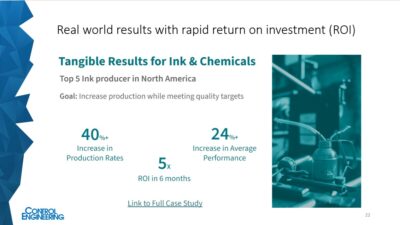Among the biggest challenges airplane manufacturers face is how to integrate manufacturing and information technology in supplier organizations, where more responsibility for manufacturing operations is shifting. One company addressing supply chain responsibility in a formal way is France's Airbus, which trailed some competitors in adopting the latest electronic design and enterprise management...
Among the biggest challenges airplane manufacturers face is how to integrate manufacturing and information technology in supplier organizations, where more responsibility for manufacturing operations is shifting.
One company addressing supply chain responsibility in a formal way is France’s Airbus , which trailed some competitors in adopting the latest electronic design and enterprise management tools. In fact, company officials admit that poor design tools were the primary cause of Airbus A380 delays.
“Airbus had some governance challenges, which flowed down to the business processes—particularly in design and manufacturing,” explains Tom Captain, a senior principal with the Seattle-based Global Aerospace & Defense practice of Deloitte Consulting .
In mid-2006, Airbus officials began evaluating far-reaching changes that would break with long-established procurement and production strategies. One specific area under review was information technology.
In September 2006, Airbus unveiled Power8, a seven-module plan aimed at significant cost reductions. Management gave the go-ahead for investments in modern design tools to ensure that Airbus would have the proper IT to support future developments.
Power8 seeks to get closer to the Boeing integrator model, according to Richard Aboulafia, VP and aviation analyst with Fairfax, Va.-based Teal Group . “Integration involves final assembly, finance, marketing, sales, and support—everything except manufacturing,” he explains.
Power8 pushes Airbus to devote its resources to core activities, and eliminate inefficiencies within the existing structure. Core business activities include overall aircraft and cabin architecture; systems integration; and design, assembly, installation, equipping, customization, and testing of major and complex components.
All this actually represents one of the major trends in airplane manufacturing, whereby companies are cutting back on their own manufacturing activities and related technology.
“They are focusing on becoming integrators rather than manufacturers,” states Aboulafia. “The goal is to push more responsibility for major subassemblies to the next tier down. Even a lot of the design technology is in the hands of the suppliers.”
But this trend is not without potential problems. Boeing has struggled with this strategy in the form of delays largely caused by some suppliers not being able to execute against their plans.
During production of its Dreamliner 787, Boeing discovered and has since rectified delays largely caused by some suppliers not being able to execute against their plans.
In mid-2007, for example, Boeing reported delays in the company’s new 787 Dreamliner because, of all things, a shortage of nuts and bolts. Major components of the airplane, including wing assemblies, began arriving from subcontractors around the world held together with temporary fasteners. Boeing and its high-tech fasteners supplier looked for ways to develop titanium fasteners fast enough to keep 787 production on course. The specially coated bolts fit into brackets at each joint, and each bolt must be made individually on a lathe.
Because it takes time to set up the lathe, the supplier preferred to make thousands of one type of fastener before breaking the machine down and resetting it for another type of fastener. Problem is, Boeing needs different bolts measured in tens—not thousands—at a time.
In September 2007, Boeing also reported further production delays because some suppliers were in such a hurry to assemble parts in time for the initial unveiling of the first Dreamliner that they failed to properly document their work. Adding to the dilemma was the fact that one of Boeing’s computer technology suppliers was scrambling to complete hundreds of thousands of lines of computer code required to run the airplane’s flight controls.
However, the Boeing integrator model still seems to make sense, partly because of the company’s reliance on manufacturing technology and information technology. For example, Boeing has significant experience with digital preassembly, as well as the new business model of flowing down design authority to Tier 1 suppliers—all using the same data sets.
One particular trend in favor of increased reliance on suppliers for manufacturing is the focus on improving global logistics.
“No one wants to hold inventory in the supply chain these days,” concludes Aboulafia. “Minimizing inventory in the supply chain requires significant IT skills, and airline manufacturers are relying more and more on this.”



